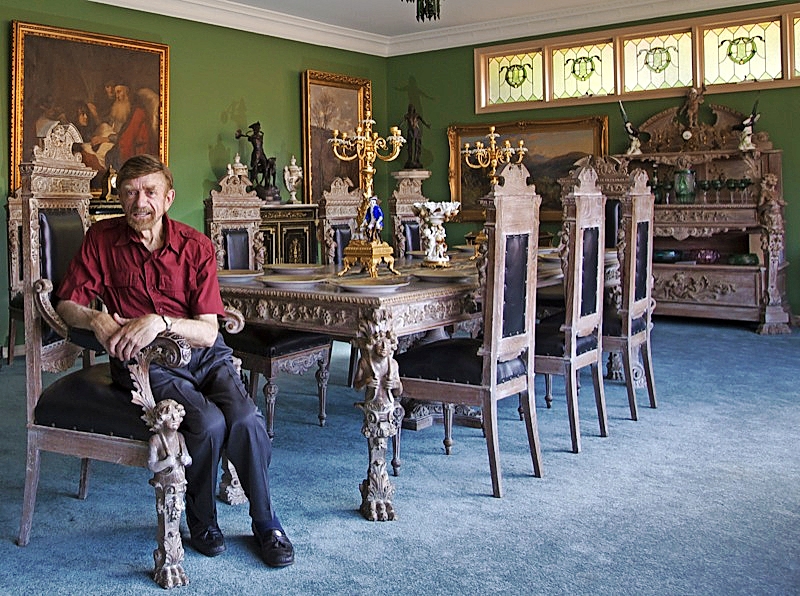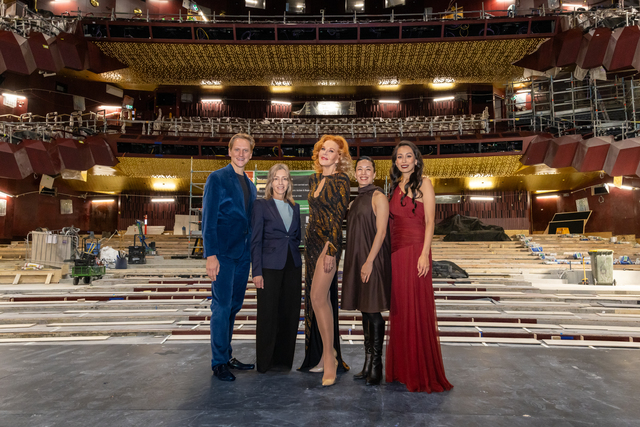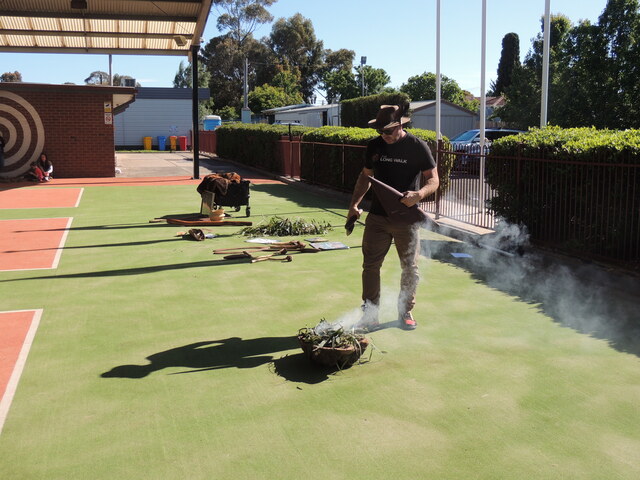The work looks familiar.
“That’s Tiepolo’s Banquet of Cleopatra – you’ve probably seen it in the National Gallery. That’s the original,” Cyril Stokes says with a twinkle in his eye. “The gallery has a copy.”
It takes a second for the penny to drop and realise he’s joking.
There is so much that is priceless in this suburban house hidden in one of the great private gardens of Victoria – not the least being Stokes himself.
This is no mansion by the standard of some of its Mount Macedon neighbours, but it contains the best private collection of 18th and 19th century porcelain in the southern hemisphere.
A collection that’s said to be equal to some of the best in Europe is housed in an unprepossessing brick bunker on Melbourne’s own back doorstep.
On account of the 80-year-old having just climbed out of his Rolls Royce, our unofficial tour begins in the garage.
It contains a stack of stained glass windows purchased from Hearst Castle, the landmark Californian mansion of the newspaper magnate William Randolph Hearst which is now a state historic park.
“Some of them date from the Middle Ages,” Stokes explains. “Lit up with lights behind them they will be magnificent – although we might have to build another room.”
Through the side door of the utilitarian concrete space it’s the visual equivalent of entering an air-conditioned room on a 42-degree day.
It’s the anteroom to Versailles – the beginning of an expedition through room after room filled with Sevres, Meissen, Minton and KPM porcelain.
One whole room is filled with Royal Worcester, another room is Oriental-themed with display cabinets filled with Japanese Kutani porcelain, antique ivories, a double-sided silk signed embroidery so fine it looks like a painting, and giant cloisonne urns.
It’s eye-popping and the personal running commentary is way more entertaining than reading endless explanatory cards.
“That over there is mother of pearl and we found it in a pawn shop in southern California, way up in the mountains in a preserved mining town.”
Stopping in front of a vast elaborately carved piece of furniture, Stokes gleefully pops open several secret drawers.
“Now this won the gold medal at the 1897 Crystal Palace Exhibition. How it ever got to Australia I just don’t know.
“This Sevres table I had to be talked into buying. Pro Hart owned it and he had been mixing his paints on it. So we had to restore the whole damn thing. It took forever.
“Now this piece of Meissen – how the hell does an 18th Century piece of porcelain like that survive intact? And when you think it was made by candlelight!
“I’m not going to tell you how much this damn cabinet cost, but it was perfect for this tea set which in the photo looked so much bigger and I was surprised when it arrived.
“This dates from the 1700s when Sevres was owned by the King of France and it was at the time the French developed the hot air balloon ….”
On and on it goes, past the laundry where a small mountain of Sevres sits on the bench because there is nowhere to put it.
Past the fabulous French Boulle furniture inlaid with tortoiseshell, the walls of 18th Century Aubusson tapestries, the stunning 1910 Tiffany glass window.
Opposite the Tiffany, Stokes points out the small oil painting of trees and sheep that started it all in 1954 when he bought it for two pounds ($4).
It was in so many ways a turning point in his life.
A would-be Wesleyan minister, he’d not long “been kicked out of theological college for having gay tendencies” and went to work for antiques dealer Godfrey Hayes.
But, ultimately, it was in aged-care homes where Stokes made his money.
“I finished up with eight of them,” he recalls. “I worked seven years without a day or night off and as I sold them off I made a lot of money out of real estate and that’s how I got going.”
It also transpired the church elders had deduced correctly. At age 30 Stokes met life-partner Trevor Bell who, assisted by two full-time and two part-time gardeners, is largely responsible for the magnificent 5.6 hectares of themed gardens surrounding their house.
At 45, Stokes founded Steamworks – Melbourne’s first and most famous gay bathhouse – which he owned for 30 years. In 2010, the LaTrobe Street property was sold for
$6.35 million and since then the Cyril Stokes Collection has grown considerably.
He spends many evenings online, bidding at auctions in Europe and America and it is not unusual for him to drop $200,000 on a single auction. His office is filled with marked catalogues, and the bidding can get quite fraught.
You get the sense he is racing against the clock. “I think I almost qualify for an antique myself,” he laughs.
Several years ago he took the extraordinary step of establishing a trust to ensure The Stokes Collection will remain in perpetuity for the public to visit. “When we have gone, the trustees will have to advertise for a curator and staff because there is an awful lot of work,” the collection’s architect explains.
“But for now I’ll just keep on dusting.”
Forest Glade Gardens is open to the public 7 days a week from 10am-4.30pm, September to May.
The Cyril Stokes Collection can be viewed by booking.
sharris@mmpgroup.com.au
» … thestokescollection.com.au or phone 03 5426 1323







